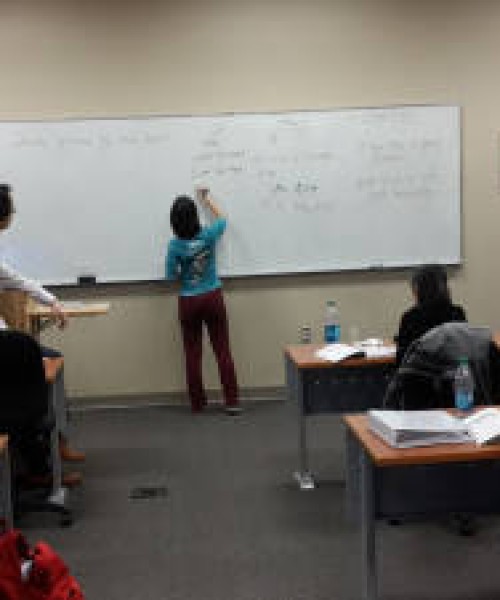医疗技术的发展有助于患者能够以姑息治疗单位的帮助下,他们的生活。虽然生命支持单位的发展是受欢迎的,存在这样的场合,使用的生命支持单位可能是值得怀疑的。生命支持单位给患者带来希望,并提高他们的亲属的生命和健康的期望。然而,有一些情况下,使用生命支持单位不应该是首选。在这种情况下,讨论出现有关谁将负责这些单位的应用,谁来决定这个问题。在这方面,本主题的问卷调查的结果。的教师观和护士将从生命支持单位会引起伦理和行政问题的角度评估。
INTRODUCTION
Technology and knowledge have turned the presentation of the health service into a communicational and institutional service that is based on high technology by excluding it from being an individual activity through applying new technical inventions on mass production industry in 18th and 19th century and triggering information-knowledge age in 20th century (1). This current state led society to deliver their own opinions about the presentation of the health service, affecting the health community negatively. This effect took part both in the quality and the presentation of the health service. While technology and knowledge facilitated the transition of health knowledge into a service and simplified its access, they also formed new cases that scrutinize the cognitive and biological features of the human such as biotechnology, psychometrics, and sociobiology. There also emerged new concepts and approaches such as health, diseases, death, and life which are related to the issues that deal with presence of the humanity. Today, there exists a distinction between technology and high technology while high technology is used for the diagnosis and treatment of the patients (1).
The opportunities that technology provides to health services affect not only the intervention from the beginning but to the end of life. Thereby, it is quite possible to state that it serves for the intervention in the process of death on behalf of the medicine. This kind of development evokes the idea of delaying the death and even curing it just like a disease. Likewise, the idea of challenging death and senility just like in science- fiction novels has been well accepted. So why are we not accepting this idea in the real world?
The developments indicate that the concept of death might be shaped in accordance with the person's own will. Contemporary people prefer a painless death just like they opt for similarly a painless life. The complicated relationship between the health industry and technology enabled doctors to work as technicians. In the light of all these developments, a unit which is crucial for life and death - in other words 'intensive care units' were established in conclusion to the factors mentioned above.
In the early 20th century, the idea of constructing intensive care units and life support units along with ventilators and oxygenators was accepted. As for 1930s and 1940s, the idea of establishing intensive care units was supported and the number of these units increased. (2) Between 1948 and 1953, anesthesiologists had an active part in intensive care units. The artificial respiration units were established in 1950 in Europe, in 1960 in USA in Oxford Baltimore and Toronto Universities (2,3). The first ventilator was designed by Carl-Gunnar Engström in 1950. The volume ventilator of Enström was used in 1951 accordingly (3). As for our country, the first four bed intensive care unit was established with the help of Prof.Dr. Cemalettin Ã-ner and Opt.Dr.Rıza Tezel from HaydarpaÅŸa Hospital in 1960. In 1990s, life support units were established (4).
The intensive care units serve to help patients with organ failures in the use of those organs until the organs can function normally again. This process includes all of the activities which are necessary for the health of the patient (5). The doctors and nurses are capable of using artificial respiratory units as well as many other devices and technology which are necessary for the intensive care units.
In 13.08.2007, Health Ministry of Turkey established "Standards for Intensive Care Units". Today, there exist intensive care units in every hospital in every city of Turkey. In developed countries, there are also nurses, psychologists, social service specialists, physiotherapists, and medical ethics specialists as well as anesthesiologists in intensive care units (6,7).
The patients who are treated in intensive care units are either conscious or unconscious patients. They are treated in the units until they are healthy enough to be treated by ordinary hospital services. These kinds of patients are treated in intensive care units and they utilize life support units if their doctor considers it necessary. The position of the patients who are treated in intensive care units and are more likely to be in danger of having a cerebral hemorrhage, renal failure, brain death, or muscular diseases are at higher risk than the other intensive care unit patients (6). Therefore, the need for a life support unit is much more crucial for such kind of patients. In this case, the medical and ethical responsibility of health professionals increases (7,8).
The responsibility of a medical team can be expressed in four subtitles. The first one is deciding whether the patient will be kept alive with the help of life support units or not; the second one is deciding whether the patient will be disconnected from a life support unit or not; the third one is the continuing the application of a life support unit; and the last one is the decision made by neurology, neurosurgery, anesthesia, or cardiology professionals; to disconnect the life support unit in the case of patient being brain dead (9,10,11). There are various views about the proceeding question: "Does the family or the doctor of the patient decide on the disconnection of the life support unit when brain death occurs. Or should both of them decide on this issue?" The life of a person who is brain dead can be maintained by means of high technology. However revival of this patient is impossible. This current state conveys the relationship between relatives of the patients and the health professionals to a legal and ethical platform.
The developments, applications, and concepts about this issue cause conflict in our country as they have recently appeared in our terms (12).
Situations such as minimizing the life chance and/ or decreasing quality of life of the terminal patients who are in need of life support units; or the situation in which there is little chance for the patients to return to health cause ethical contradictions. In such cases, medical decisions and ethical challenges should be scrutinized as the medical ethics principles, ethical codes, and legal regulations give right to make a decision about the process of the disease only to the doctors other than medical team. Medical ethics principals and patient rights regulations state that receiving informed consent from the patient and including the patient in the disease process are considered as the main principle. This main principle cannot be realized only when the current state of the patient is not suitable for deciding, understanding, and expressing his opinions (13,14,15). For instance the patience might be unconscious when s/he is taken to the hospital, s/he might be a child, or might be psychologically ill. Inarticulateness and uncommunicativeness of the patient might lead to confusion about the cognitive expectation of the patient. Medical ethics principles and patient rights regulations make relatives of the patient along with the medical team participate in the process of making decision about connecting and disconnecting life support unit. The only situation in which the medical team decides about the situation of the patient is when no one can get in contact with relatives of the patient. In this process, the medical team considers the patient's right to live, his/her views about quality of life, agreement on death decision, and the quality of the death by taking into consideration the medical evaluation(16).
Euthanasia; the meaning of this word is easy, painless, and a happy death; it was used and applied in ancient Greece and Roman times. In 17th century, Francis Bacon categorized euthanasia in 2 types. The first one is interior euthanasia which prepares the patient's soul to a peaceful death with the help of the priests. The second one is exterior euthanasia which means terminating the life of a patient who has no chance to live in a painless way (17).
Today euthanasia stands for "terminating the life of a patient who has no chance of treatment or with the will of persons who have the right to decide in the name of the patient, making a decision for the patient"(17). Euthanasia is discussed in three different contexts. The first one is active and passive euthanasia in terms of the doctor's commission; the second one is voluntary and involuntary euthanasia in terms of the patient's will; and the last one is direct and indirect euthanasia in terms of the activity's quality(17). The concept and application of euthanasia have been discussed about whether it is a human right or not and this issue does not only include medical justification and application. It also has ethical and legal sides requiring an interdisciplinary approach.
Some countries defend the idea that people should be free to choose the right to die and consequently they advocate that euthanasia application should be a legal right. For instance; while Italy decides for the preparation of " biological free will", Holland, Belgium, Australia, Oregon state of USA, Sweden and Luxemburg laws evaluate demand of death as a right and permit euthanasia legally (18,19,20).
Medical Ethics Principles:
Ethics principles enable the connection with systematic thinking that serve for the assujettissement of medical applications (16). "Systematic thinking stands for achieving an applicapable, consistent, and stable thesis other than the certain answers"(17).
These principles are; nonmaleficence, beneficence, justice autonomy, justice, confidentiality, privacy, and honesty. A medical team should consider the medical ethics principles when they decide about disconnecting life support unit. Medical ethics principles are consideration during the whole process of the life support units.
The first principle is that if the current situation of the patient does not differ and this process does not help the treatment, disconnecting life support unit might be a decision to make. Every single step should be applied in the frame of medical ethics principles. The second one is that the medical team should be informed about the patient's expectation of life quality either by the patient himself or relative of the patient due to the medical ethics principles and they should consider this information in the process of the decision. The third one is that medical team should inform the patient or relatives of the patient about the current state by explaining the fact that life support unit will not help the patient for rehabilitation. Otherwise relatives of the patients may be disappointed and accordingly they may accuse the medical team essoining the deficiency of medical care.
Obstacles among the medical team, patient, and relatives of the patient: The first obstacles are the socio-cultural status, educational level, approach, and belief. If these differences which cause obstacles are not evaluated and precautions are not taken, communication between the medical team and relatives of the patient becomes impossible. As for most of the people, the decisions should be in agreement with the religion. Besides, the patient and relatives of the patient may not listen to doctors' speech actively due to anxiety, mourning, fear or sorrow so they may not fully understand the whole dialog. The medical team should take precautions for the emotional crisis that relatives of the patient undergo. However the chance of mutual apprehension and consensus decreases.
The second obstacle is denial of the current situation by relatives of the patient. They may not accept the current situation of the patient even if they are told about the situation many times. They may also have absurd thoughts as if the medical team is trying to get rid of the patient. In this case the medical team should be receptive and patient towards relatives of the patient and allow for understanding. At the end of the process, they should be told about the prognosis of the disease with the help of pictures and brochures and a mutual decision should be made about the current situation of the patient (21).
The third obstacle is avoidance of guilt and responsibility of relatives of the patient. They may feel guilty due to the decision they make, so they may not give informed consent. Accordingly, they tend to leave the whole responsibility of the decision to the medical team. In this case, psychological support should be provided to relatives of the patient about the process of decision.
The fourth obstacle is that relatives of the patient and the patient are not autonomous individuals. As the concept of individualism has not improved enough especially in tribe (aÅŸiret) based communities, active participation in the decision stage does not exist. People who live in East Anatolia and South East Anatolia are used to accepting the ideas of the people who are accepted as leader in their community. This situation limits a doctor's radius of action and the doctor is accused of the result.
The decision of connecting patient to a life support unit; The medical team evaluates the lab results and physical treatment considering current technical resources. Accordingly they tell the patient and relatives of the patient about the benefits of life support unit by receiving their informed consent. There may exist some ethical problems when the decision is made about the life support unit. One of these problems is that if a patient does not have legal competence, the decision of the medical team or relatives of the patient may not correspond with the patients' view about life and death (12,13).
The medical team may also prognosticate about patient's views from the relatives. Appropriate questioning is essential in the process of the decision. The medical team should ask the question: "If your patient would be conscious, would s/he choose to live under such conditions or end his/ her life?" instead of "What's your decision about the current situation of your patient?". This kind of approach directs relatives of the patient to think in patient's shoes rather than their own opinions. The other problem is that if patient is not an adult, should the decision be made by the relatives or the patient? Which one should be considered by medical team in such occasions?
Withdrawal of medical treatment; This term stands for terminating the relation between the patient and life support unit. Sanctity of life is essential for doctors and they consider treatment as an assignment. The decision about withdrawal of treatment is a really hard decision for doctors. Nevertheless, if the patient suffers from a coma, renal and liver failure or myopathy- in another words patient suffers from incurable disease (6), Ministry of Health Organ and Tissue Transplantation Regulations states that if brain death occurs, patient should be disconnected the life support unit. This decision also contains moral responsibilities besides medical ones as this decision is crucial for the life expectancy of the patient. That's why decision process should be well-planned as it also reflects views of the patient. This sort of information may be obtained from the patient or the relatives. If these probabilities are not available, medical team prognosticate about the life expectations of the patient and consider this prediction in the process of the decision (22).
The decision about withdrawal of the treatment is different from euthanasia. The prior aim is not the death of patient in withdrawal of treatment.
Who should decide disconnecting life support unit? : This is a crucial question. How should the medical team, the patient and relatives of the patient answer this question? What kind of a role should the medical team accept in this process? The answers of these questions should be in the frame of ethical principles.
The medical ethics, deontology legislations, and patient rights regulations give importance to enlightenment and approval of the patient. Medical team act on behalf of the patient's declaration.
If the patient is conscious, the patient should be informed about the risks and prospects of the treatment. The decision should be made in accordance with the free will of the patient.
If the patient is unconscious and there is not a relative of the patient to be informed about, then medical teams make decision about the current state of the patient.
Medical team should not declare their own opinions about the process of the decision as they might affect relatives' opinions.
If the patient is unconscious, diagnosis and prognosis are evaluated first. Necessary information about the patient about his/her expectations are obtained from the relatives and in the light of this information, a decision about connecting or disconnecting life support unit is made.
Responsibility of the decision is shared by the relatives and the patient by highlighting decision of the patient. Patient rights regulations and deontology legislations highlights patient's opinion.
DISCUSSION
On one hand, technology causes differentiation of application of medical deals, on the other hand it causes changes in the meaning of old concepts such as life, illness and death and forms new concepts such as the life support unit, palliative care, brain death. So called differentiation or multi-directional relation of technology and medicine have been effective in terms of presentation and maintenance of the medical service. And with the changing consideration, as it was before, the role, priority; paternalist and dominant role of doctor/ medical staff who took part in different stages or expansion of the presentation of the medical service has changed. Doctors/medical staffs give clear medical information about pathogenesis, process of the disease, prognosis to patient or relatives of the patient but the decision is made by patient and doctor or relatives of the patient and doctor. The process stems from the necessity that psychosocial and ethic approach need to be accompanied by biological approach. This approach is associated with importance that philosophy and social sciences have gradually gained due to the change in the concept of science. Because biology based decisions given by medical staff and psychosocial based decisions given by a patient or relative of the patient are evaluated in tandem, a decision approved on a medical, ethical and psychosocial basis is likely to be applied. In this context, life support units which are the subject of this study as an innovating treatment service also caused some ethical dilemmas. However the decision of connecting or disconnecting life support unit is a medical necessity, objective knowledge acquisition rights, principles, and regulations are for the patient rights. Accordingly, these concepts prevent medical decision. However, the communication and approach in the context of medical ethic provides all the parties to have a voice.
There is a meaningful difference between the answers of the doctors and nurses about the questions in the research: "Is that appropriate to disconnect with the life support unit of a patient whose brain death has occurred? Is that necessary to have informed consent of a conscious patient before being connected to the life support unit? Do you accept disconnecting life support unit of a patient whose brain death has occurred as euthanasia? Can the family of a patient make a decision about disconnecting with life support unit?" The reason of this difference is thought to be stemmed from the differences of the responsibilities of doctors and nurses in terms of professional occupancies. There seems also a meaningful difference among doctors, nurses, and the relatives of the patient with the phase: "the decision about disconnection with the life support unit should be given with doctor". This situation is thought to be a result of the education and experience differences between health professionals and relatives of the patient. Another reason of this difference is the idea of disconnection with the life support unit and sacredness of the life is not arguable in the society.
As a result, the medical decision given by a doctor and cultural, sociological and religious based decisions meet on a balanced platform and this platform enables a kind, peaceful, sensible communication between the doctor and relatives of the patient. Such an attitude alienates medical staff from the patients and prevents them from providing services with a mechanical approach. We all are aware that rather than lengthen the lifetime of the patient, the most important objective is the participation of the patient in the process of their condition and his/her being content with the process.










